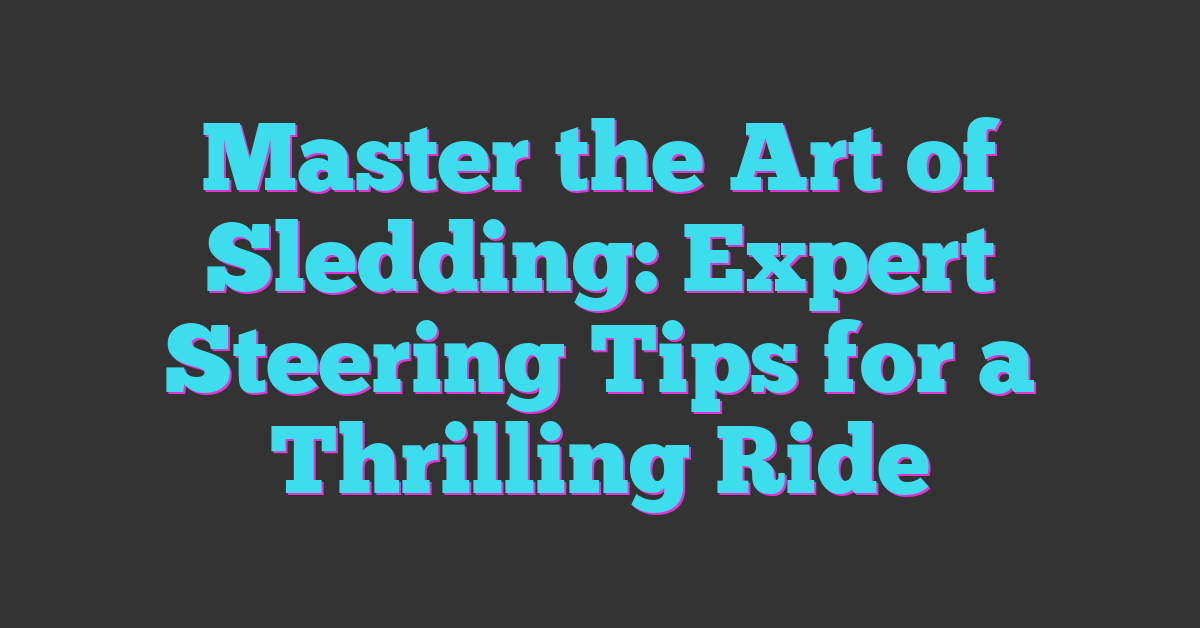Imagine gliding down a snowy slope, the crisp air filling your lungs as you carve through the powder. While snowboarding is all about that exhilarating ride, adding poles to your toolkit can enhance your experience in ways you might not expect. Whether you’re navigating tricky terrain or looking to improve your balance, poles can give you the extra support you need.

Understanding the Purpose of Poles in Snowboarding
Poles play a vital role in snowboarding, enhancing your overall experience on the slopes. They provide support and improve your control, allowing you to navigate different terrains with confidence.
Enhancing Balance and Stability
Using poles can drastically improve your balance. As you ride, poles help distribute your weight more evenly, allowing for better stabilization, especially on uneven surfaces. When you lean into turns or encounter bumps, poles give you that extra point of contact, which helps maintain your center of gravity. You’ll find that pole placement can aid in preventing falls, allowing you to ride more fluidly down the mountain.
Aiding in Navigation and Control
Poles also assist in navigating challenging terrain. You can use them to push yourself on flatter areas or gain speed while traversing. In tight spots, they help you maneuver effectively, giving you the leverage needed to change direction quickly. With proper pole techniques, you enhance your control over linked turns and carve your path through various conditions, making every descent feel more effortless.
Types of Poles Suitable for Snowboarding
When it comes to choosing poles for snowboarding, not every pole is created equal. Knowing the right types can significantly elevate your snowy adventures.
Materials and Their Benefits
You’ll find poles made from various materials, primarily aluminum and carbon fiber, each offering unique benefits:
- Aluminum: Durable and affordable, aluminum poles withstand rough conditions. They resist bending and breaking but can be heavier compared to other materials.
- Carbon Fiber: Lightweight and stiff, carbon fiber poles provide excellent performance on the slopes. Their reduced weight enhances mobility, making it easier to navigate in deep snow.
- Composite Materials: Combining the best of both worlds, composite poles offer a balance of flexibility and weight. They perform well in various conditions and are known for their longevity.
Choosing the right material can impact your performance, so consider your riding style and typical conditions.
Adjustable Versus Fixed-Length Poles
You’ll generally choose between adjustable and fixed-length poles, both with distinct advantages:
- Adjustable Poles: These poles allow you to change the length, making them versatile for different slopes and conditions. Adjusting the poles helps with balance on varying terrain; they work perfectly for beginners or those who like to carve on different inclines.
- Fixed-Length Poles: Offering stability and a consistent feel, fixed-length poles come in sizes tailored to your height. These poles ensure that you stay steady during sharp turns and high-speed descents. If you prefer a straightforward option without adjustments, this could be your choice.
Understanding the differences between adjustable and fixed-length poles helps you make a decision tailored to your snowboarding style and preferences.
Techniques for Using Poles Effectively
Using poles effectively can significantly enhance your snowboarding experience. Master these techniques to maximize your control and stability on the slopes.
Proper Pole Placement
Positioning poles correctly is crucial for maintaining balance. Hold poles with your hands just above your thighs. Ensure the tips point slightly forward as you navigate, providing support without hindering movement. Place the poles in the snow at an angle, ideally around 45 degrees, to create leverage while making turns and maintaining stability on uneven terrain.
Timing Your Pole Plant
Timing plays a vital role in successful pole planting. Plant your poles as you enter a turn—this helps transfer weight and initiates your movement. Aim to plant the pole just before you begin to lean into the turn, ensuring your timing aligns with your body’s motion. This practice allows your upper body to remain stable, aiding in smoother transitions between turns.
Integrating Poles into Your Turns
Incorporating poles during turns enhances your overall performance. Maintain a fluid motion by planting your pole on the side opposite to the direction of the turn. This action helps carve the turn more effectively. Keep your elbows slightly bent, and use the poles to guide your shoulders, allowing for smoother, more controlled movements as you round each curve.
Common Mistakes to Avoid
Snowboarding with poles can enhance your experience, but certain mistakes can hinder your performance. Avoiding these common pitfalls makes your time on the slopes even more enjoyable.
Overusing Poles
Over-relying on poles can throw off your balance and rhythm. Instead of using poles for every movement, focus on incorporating them at strategic moments. This means you should plant your poles primarily when initiating turns or navigating tricky sections. Remember, excessive pole use might lead to fatigue and less control, so conserve energy by utilizing them effectively rather than habitually.
Incorrect Pole Length
Using the wrong pole length can negatively affect your technique. When poles are too long, they can create awkward angles and hinder your ability to navigate. If they’re too short, you might not achieve the leverage needed for optimal control. To find the right length, grip the pole with your hand at your side. Your elbow should bend at about a 90-degree angle. Adjust your poles based on this guideline to ensure a comfortable and effective stance that maximizes stability and maneuverability.
Conclusion
Using poles in snowboarding can truly elevate your experience on the slopes. They offer support and balance while enhancing your control and navigation. With the right poles and techniques, you’ll find it easier to tackle various terrains and enjoy smoother rides.
Remember to choose poles that fit your style and comfort. Whether you opt for adjustable or fixed-length poles, the right choice can make a big difference. By practicing proper pole placement and timing, you’ll be carving turns with confidence in no time.
So grab your poles and hit the slopes. You’re all set to enjoy a thrilling snowboarding adventure!
















